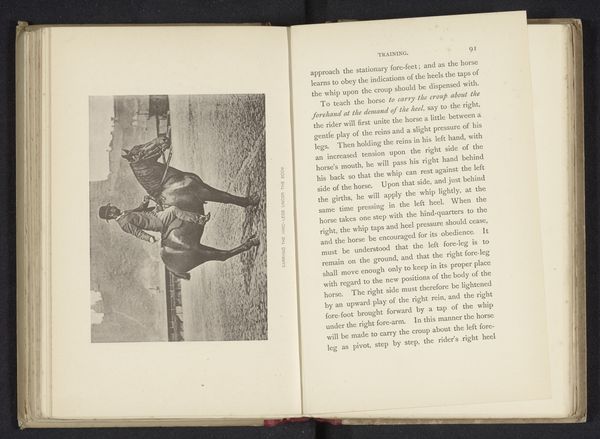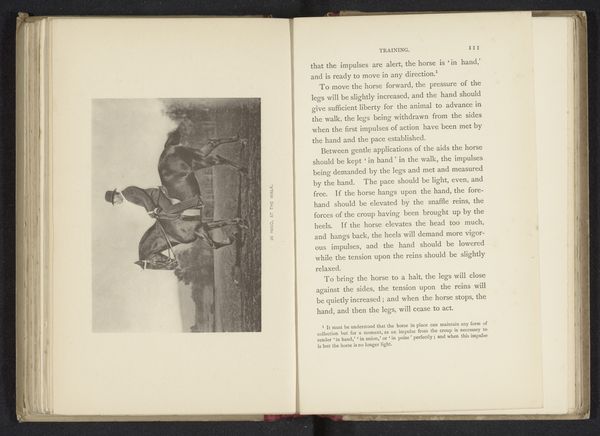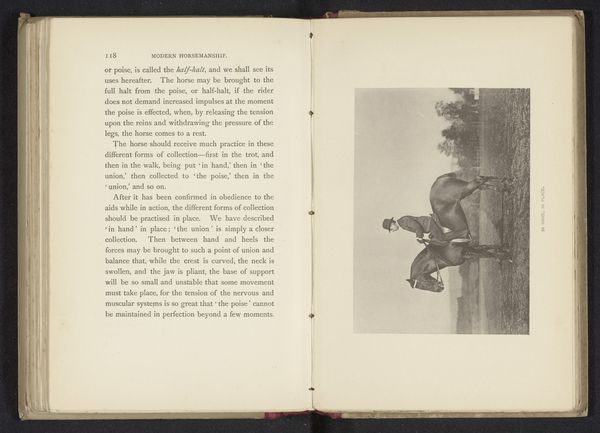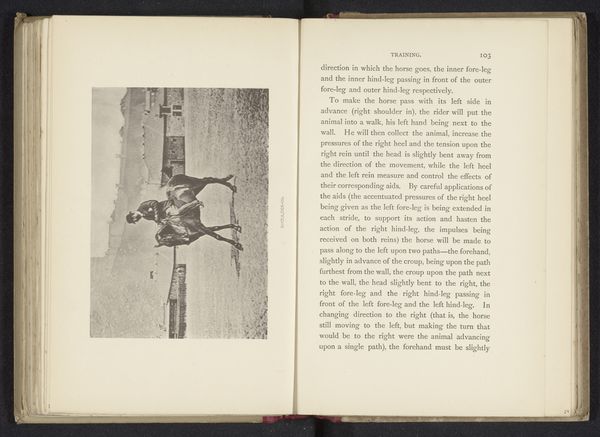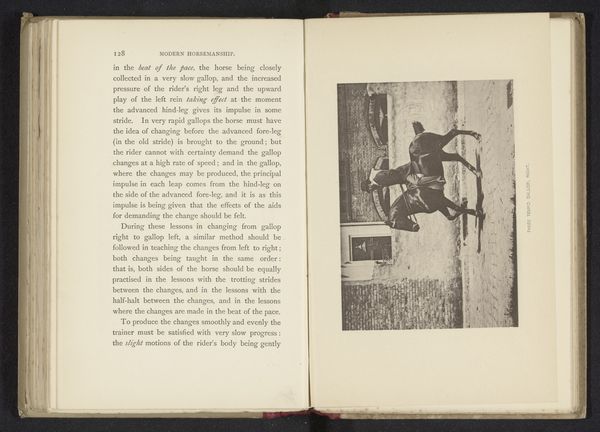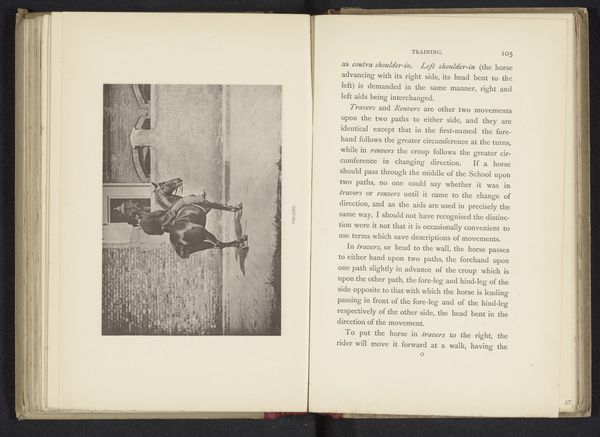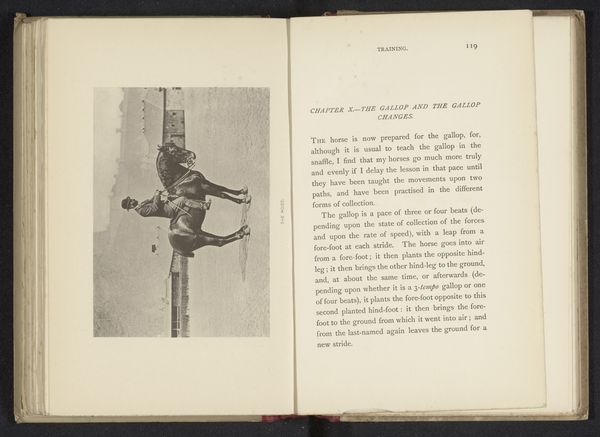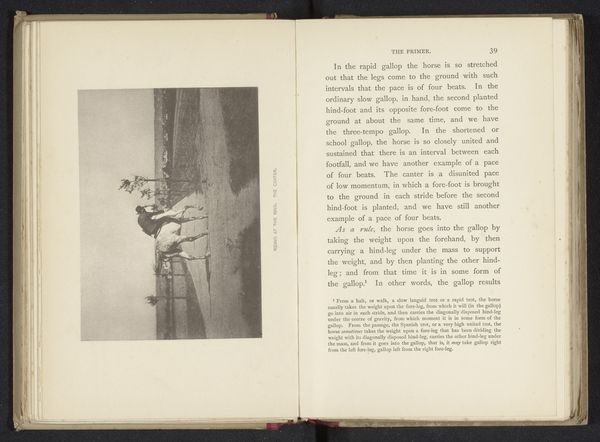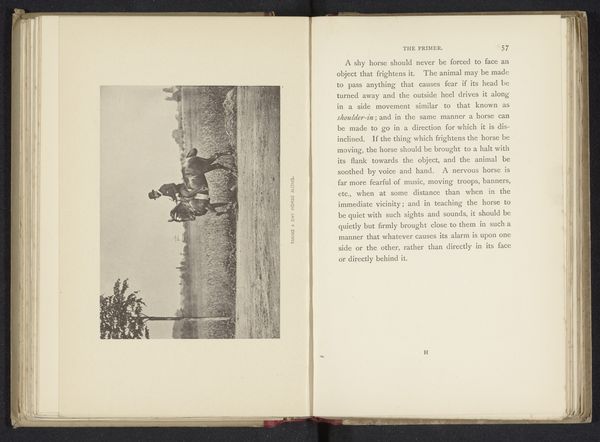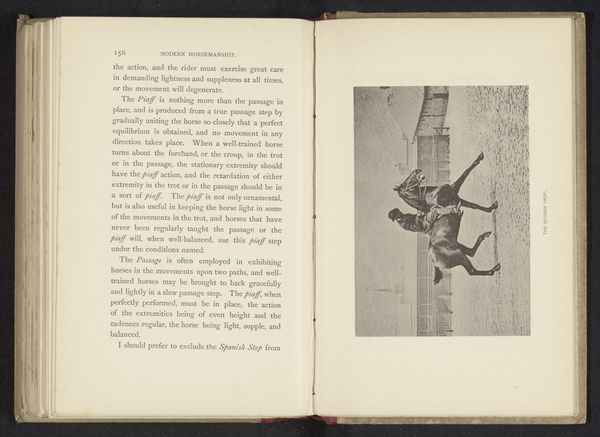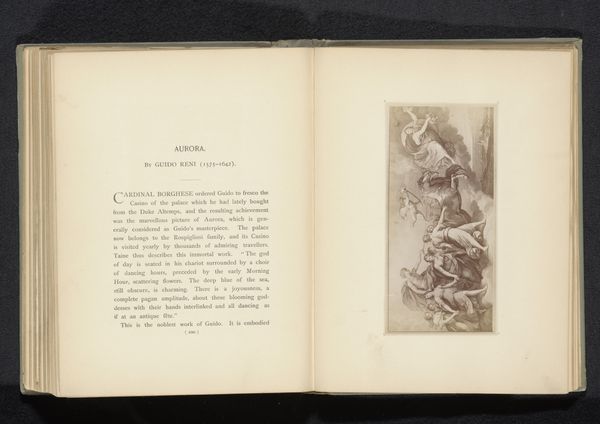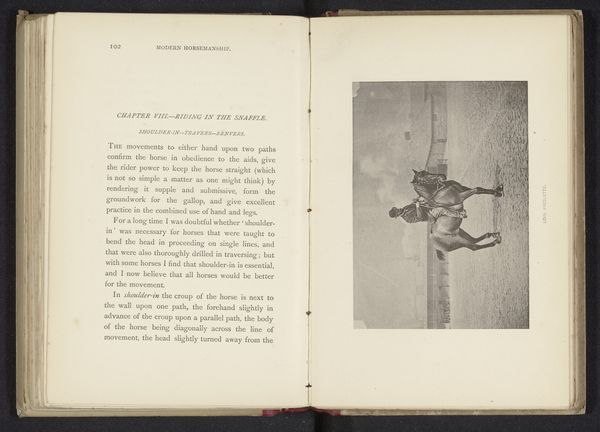
#
aged paper
#
homemade paper
#
ink paper printed
#
sketch book
#
hand drawn type
#
personal sketchbook
#
hand-drawn typeface
#
horse
#
thick font
#
sketchbook drawing
#
sketchbook art
Dimensions: height 97 mm, width 137 mm
Copyright: Rijks Museum: Open Domain
Editor: This page, "Man op een paard met een voorbeen omhoog," or "Man on a Horse with a Foreleg Up," appears to be a sketch, perhaps from a larger sketchbook, created before 1889 by Alexander Nicol. It’s intriguing how the horse and rider are rendered, seemingly floating on the aged paper. I’m struck by the context it's in: facing a page of text about horse training. What do you see in this juxtaposition? Curator: I’m drawn to the production itself. We see ink on paper, a relatively accessible medium, yet the context reveals a class dimension. The facing text highlights "training" – a highly specialized skill, tied to equestrian culture and upper-class leisure. Nicol documents the labor and process, while the very materiality of the sketchbook— the homemade paper, the hand-drawn typeface on the facing page—challenges our understanding of art's separation from everyday practice. How does the physicality of the book influence our interpretation? Editor: That's a fantastic point. I hadn’t considered the class aspect of the equestrian training described in the adjacent text. Does the choice of materials, like the seemingly inexpensive ink and paper, offer a subtle critique? Curator: Precisely! Nicol isn't just depicting a horse; he is engaging with the means of representing horsemanship. By choosing these humble materials and showing the image in process alongside text, he underscores the contrast between the exclusive world of riding and the more democratic potential of artistic production. It prompts us to consider who has access to the depicted activity, the creation, and the consumption of art. Editor: I never would have noticed the interplay between production and class dynamics like that! So much more to think about beyond just the image itself. Thanks! Curator: Absolutely, viewing art through its production and reception allows a much richer and deeper appreciation for not just the subject of art but how people throughout the centuries related to work and each other.
Comments
No comments
Be the first to comment and join the conversation on the ultimate creative platform.
